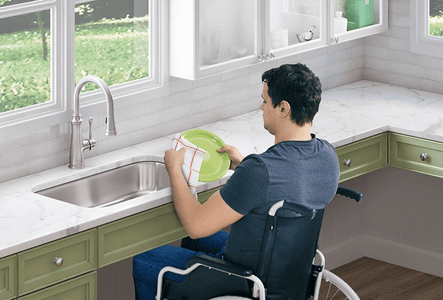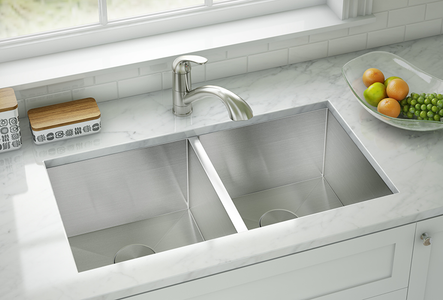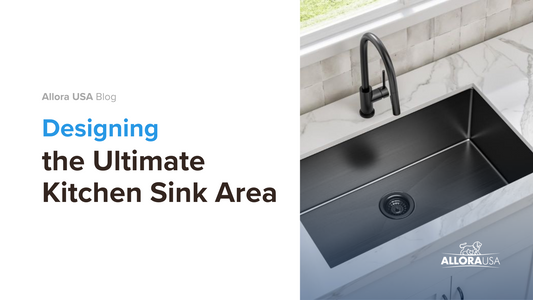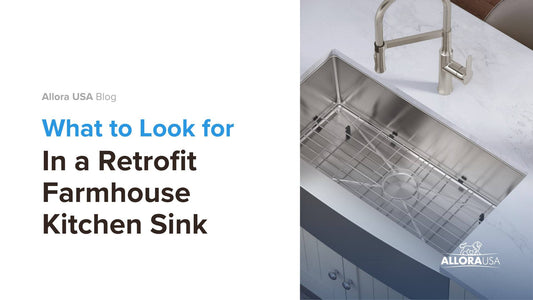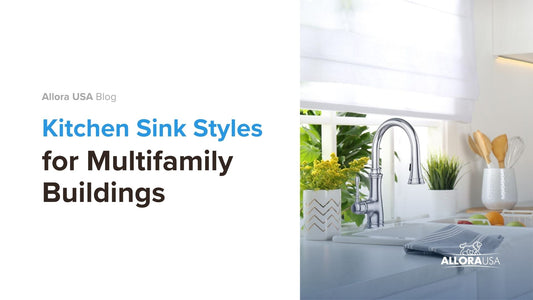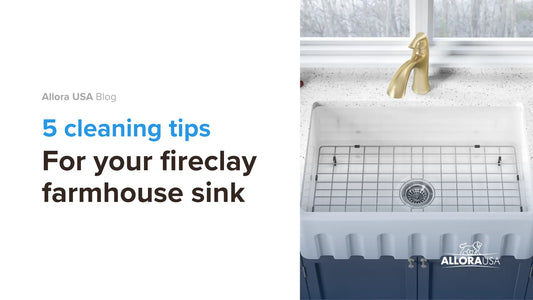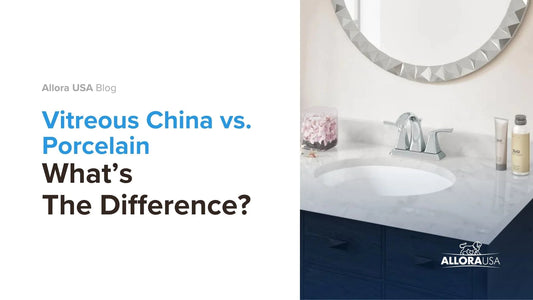5 Different Types Of Kitchen Faucets
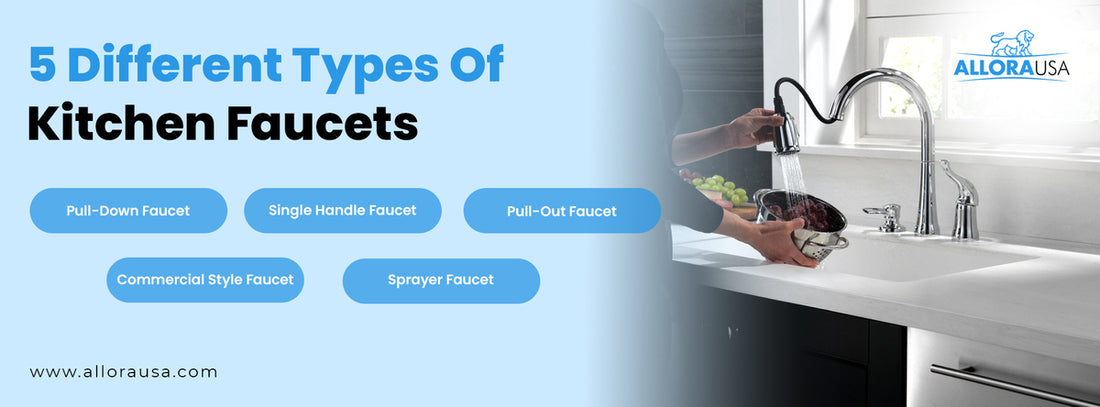
Kitchen faucets are an essential part of any home. They come in different styles, shapes, and finishes to complement the kitchen's design and functionality.
In this write-up, we will explore the five different types of kitchen faucets available today.
Whether you are looking for a basic faucet or a high-end model with advanced features, this guide will help you choose the right faucet for your needs.
So, let's get started and discover the different types of kitchen faucets.
Different Types Of Faucets For Your Kitchen
Below, we have mentioned the different types of kitchen faucets:
1. Pull-out faucet
If you need a faucet with a lot of motion and reach, the pull-out faucet is one of the ideal options. With the help of this faucet, you can easily reach every corner of your sink of any size.
Moreover, the pull-out faucet gives you convenience and flexibility, so you do not need to fill pots and drag them out.
Visit our Online Store and purchase the Pull Out Kitchen Faucets in three colors.
2. Single handle faucet
A Single Handle Faucet is also referred to as a single-hole faucet. This type of faucet adds convenience and ease of use. With just one handle, it's easy to control water temperature and flow, making it an excellent choice for households with children or elderly individuals.
Additionally, single-handle faucets often have sleek and modern designs, adding a touch of beauty to your kitchen. They can also be more practical, as they take up less space than traditional two-handle faucets, allowing for more space around the sink.
Take a look at our Single Handle Kitchen Faucet!
3. Pull-down faucet
Another type of kitchen faucet is the Pull-Down Faucet. This type of faucet has a spray head attached to a hose that can be pulled down towards the sink. This design allows for easier cleaning and filling of larger pots and pans.
4. Commercial style faucet
The commercial style faucets are designed to be durable and long-lasting, with features like a stylish body with a rubber neck that can withstand heavy use. Commercial-style faucets also typically have a high spout that provides great clearance for even the largest pots and pans, making cleaning and filling them simpler.
Additionally, many of these faucets offer a pull-down spray head that can make washing dishes and rinsing produce a breeze. All in all, investing in a commercial-style kitchen faucet can be a smart choice for anyone who wants a reliable and versatile faucet.
Check out our best-quality Commercial-Style Kitchen Faucet now!
5. Sprayer faucet
A sprayer faucet is ideal for those seeking flexibility in their kitchen faucet. This type of faucet has an additional nozzle that can be adjusted to provide water in multiple ways. Sometimes, the nozzle can even be removed to allow for a concentrated stream of water.
Also, sprayer faucets are perfect for washing dishes, cleaning the sink, and bathing pets. By pressing a button, you can switch from a standard stream of water to a more forceful spray. This feature makes sprayer faucets an excellent choice for larger households.
Tips for Choosing the Best Kitchen Faucets
If you're considering enhancing the appearance and functionality of your kitchen, selecting the perfect sink faucet is crucial. There are different styles and designs of kitchen faucets, so purchasing the best one can be difficult for you.
So, here are some valuable tips to ensure that you select a faucet that is suitable for your needs and will last for a considerable time. Keep reading to find out!
-
Determine your budget
The kitchen sink faucets are available at a wide range of prices, from budget-friendly to highly luxurious options. So, you must first determine your budget and buy the faucet accordingly.
-
Look at the spout height and reach
When choosing a faucet, it's essential to consider the spout's height and reach. While the appearance is a personal preference, a tall spout may not fit if there's a shelf above the sink. Similarly, if you have a double-bowl kitchen sink, a spout with a short reach may not extend to all the bowls. So, it's essential to pay attention to the spout's height and reach before shopping for the kitchen sink faucet.
-
Consider the type of faucet
There are different types of faucets available. These include Pull-Down, Pull-Out, Single Handle, Double Handle, Commercial Style, and many more. So, you need to choose the one that will look perfect in your kitchen.
Look at Allora USA and order the perfect kitchen faucets today!
Conclusion
After researching and comparing various kitchen faucets, it's clear that choosing the right one depends on your individual needs and preferences. From pull-down to separate sprayer options, there are a variety of features to consider, such as design, functionality, and durability.
Ultimately, a high-quality kitchen faucet like those offered by Allora USA can make all the difference in the look and performance of your kitchen.
So, explore our collection and find the perfect fit for your home today!
We hope you enjoyed reading this blog. You can check our other blogs too.The latest tips, straight to your inbox
RELATED POSTS
- ADA Faucets - Choosing Accessible and Aesthetic Designs
- The Ultimate Guide to Kitchen Faucets for Multifamily Buildings
- Designing the Ultimate Kitchen Sink Area
- What to Look for in a Retrofit Farmhouse Kitchen Sink
- Kitchen Sink Styles for Multifamily Buildings
- 5 Cleaning tips for your fireclay farmhouse sink
- Vitreous China vs. Porcelain: What’s The Difference?

